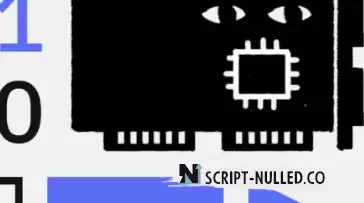How Bitcoin mining works
How Bitcoin mining works. What is the PoW algorithm in simple words

We tell you how the algorithm for mining the first cryptocurrency works, what advantages and disadvantages it has, and what alternatives exist
Cryptocurrency mining is a process that involves solving complex mathematical problems to confirm transactions and create new digital coins. One of the most widely used mining algorithms is Proof of Work (PoW), which provides a secure and decentralized mechanism for confirming transactions on the bitcoin network or other cryptocurrency powered by PoW. In the article, we will look at how the PoW algorithm works, its advantages and disadvantages, as well as some popular alternatives, including its various variations used in coins such as Raven and Ergo.
Content
What is the Proof of Work (PoW) algorithm in simple words
Advantages of PoW
Cons and disadvantages of PoW
Mining using the Proof-of-Work (PoW) algorithm
Alternatives to PoW
What is the Proof of Work (PoW) algorithm in simple words
The Proof of Work (PoW) algorithm is a consensus mechanism used in cryptocurrency mining. Simply put, it requires miners to solve complex mathematical problems to verify and record transactions in the blockchain. Each block of transactions contains a unique task, and the miner who solves it first gets the opportunity to add a block to the general chain and receive a reward in the form of new coins. The complexity of the task increases as more and more miners participate in the network.
Advantages of PoW
One of the advantages of the PoW algorithm is that it protects the blockchain from DDoS attacks that try to overload the network with fake traffic. In addition, the amount of remuneration for mining in the form of commissions is relatively small, which contributes to a fair distribution of coins between miners. The reward for a found block is halved approximately once every four years, this process is called "halving" or "halving".
Cons and disadvantages of PoW
Despite the fact that PoW is a widely used and secure algorithm, it has a number of disadvantages that are worth knowing about.
The attack is 51%. One entity controlling more than 50% of the network's computing power can take control of the blockchain, making it vulnerable to attacks.
Limitations for GPUs. The PoW algorithm is ineffective for mining using video cards and requires specialized equipment, which may limit the number of people who want to join cryptocurrency mining.
The usefulness of the calculation results. The PoW algorithm uses a significant amount of energy and computing power to solve problems that have no practical application outside of mining.
Large mining farms. Large mining farms with significant computing power have a disproportionately large advantage in mining and can further monopolize revenue generation.
Mining using the Proof-of-Work (PoW) algorithm
Miners use computing power to solve a mathematical problem related to each block of transactions. This task can only be solved by iterating through the various input data until the desired value is found. The first miner who solves the problem transmits the solution to the network, and other miners check it before adding a block to the chain.
To add a block to the blockchain with the PoW algorithm, the miner must be the first to find a reliable hash of this block, using the computing resources of his device for this. Machines designed specifically to perform this function (ASICs) are capable of computing trillions of unique hashes every second.
The chances of adding a block as a single miner are determined by the number of hashes that the miner's device calculates per second, relative to the total number of hashes that all machines on the network calculate every second. As a rule, blocks are mined in large pools, combining the capacities of thousands of devices participating in the user pool. The largest of them are Foundry, AntPool and Binance's own exchange pool.
Alternatives to PoW
There are several other cryptocurrency algorithms that have also gained popularity due to their potential advantages over PoW.
Proof of Stake (PoS). In this algorithm, the miner's chance to confirm a block depends on the number of coins he owns. This algorithm eliminates the need for powerful computing resources required for PoW, making it more energy efficient. Examples are Ethereum (ETH), Cardano (ADA) and Binance Coin (BNB).
Directed Acyclic Graph (DAG). This algorithm is used in IOTA (MIOTA) and allows you to confirm transactions without the need for miners to solve complex mathematical problems. It is based on the Tangle structure, which is a network of individual transactions that are confirmed by subsequent transactions.
Delegated Proof of Stake (DPoS). This is similar to PoS, but instead of all coin holders participating in the block confirmation, they elect delegates to complete the task. Examples of cryptocurrencies using this algorithm are EOS (EOS) and Tron (TRX).
Proof of Capacity (PoC). This algorithm requires miners to have free hard disk space, which they use to solve mathematical equations. Chia (XCH) is a cryptocurrency that uses this algorithm and strives to be more environmentally friendly than PoW—based cryptocurrencies.
There are other variations of the PoW algorithm, such as X16R, which uses the Ravencoin coin, or Autolykos for the Ergo coin. They are also designed to eliminate the limitations of the traditional PoW algorithm and improve mining efficiency.
Proof of Work is a fundamental algorithm that is widely used to protect the blockchain, allowing miners to solve complex mathematical problems and earn rewards in cryptocurrency. Despite the advantages, the main one of which is its proven reliability over the years, it also has disadvantages, including the possibility of 51% attacks and the concentration of power in the hands of large mining farms.
As the technology evolves, further innovations and alternatives to PoW can be expected, which have various advantages and disadvantages. Ultimately, the choice of algorithm will depend on many factors, including the specific needs and goals of the network and its users.
Go back